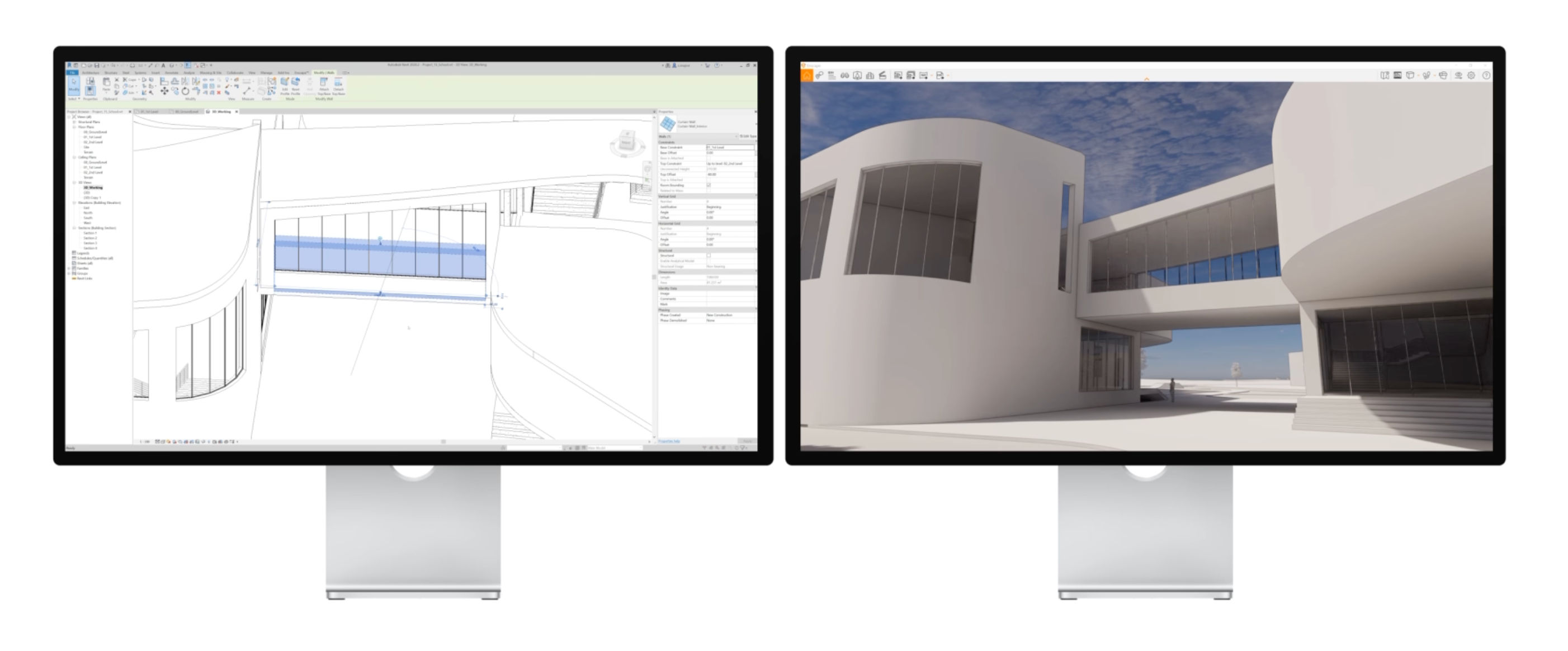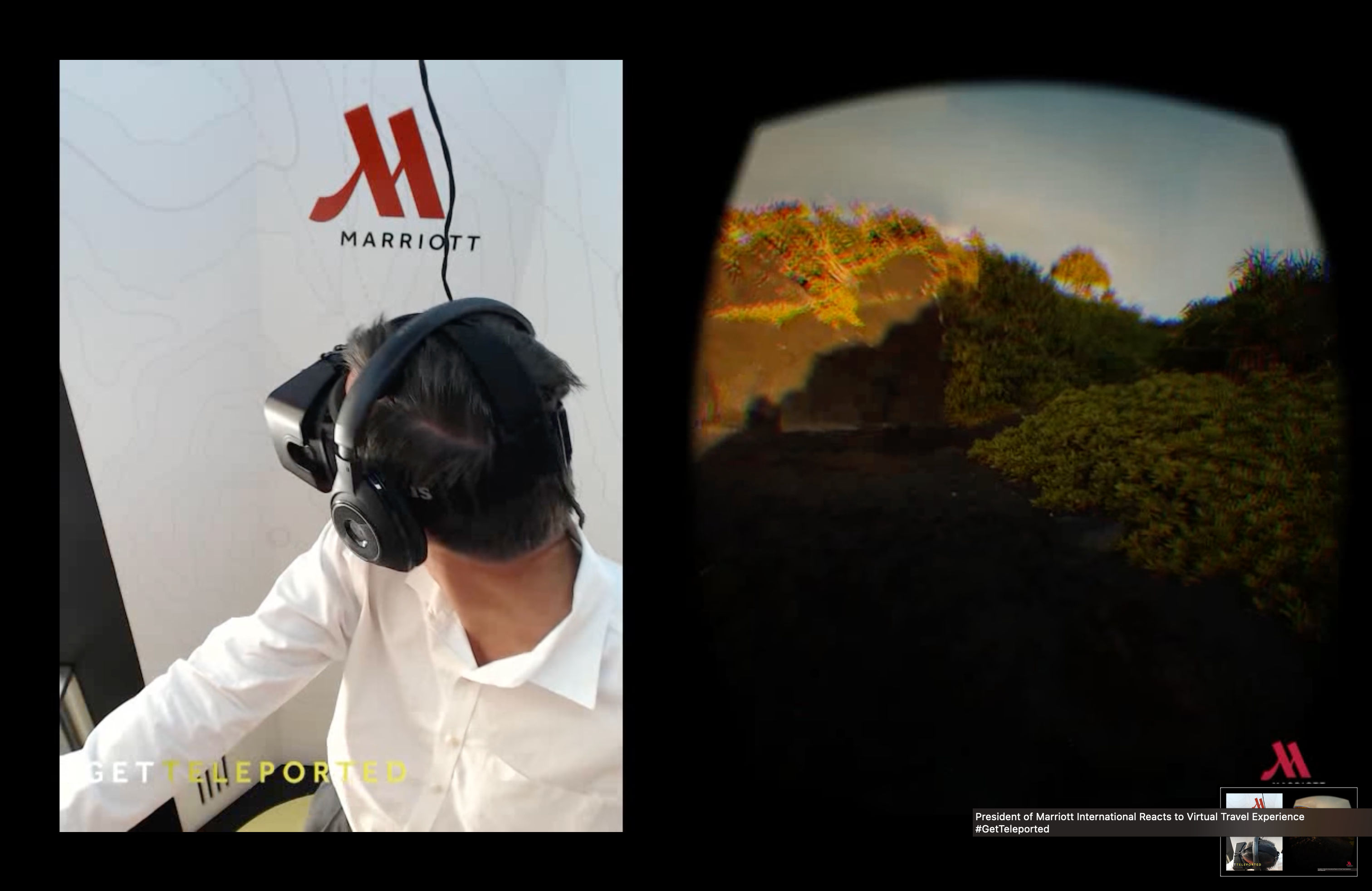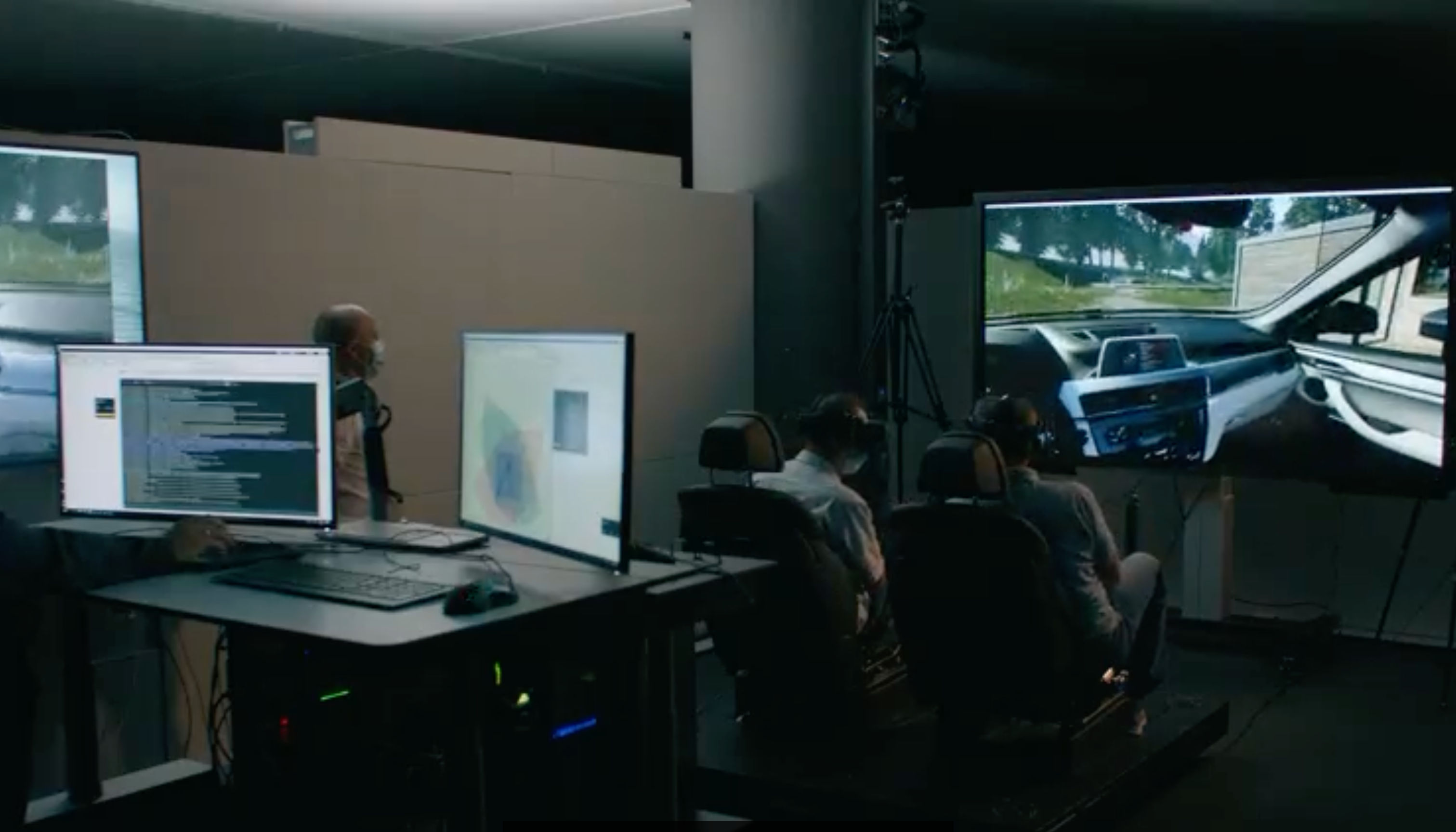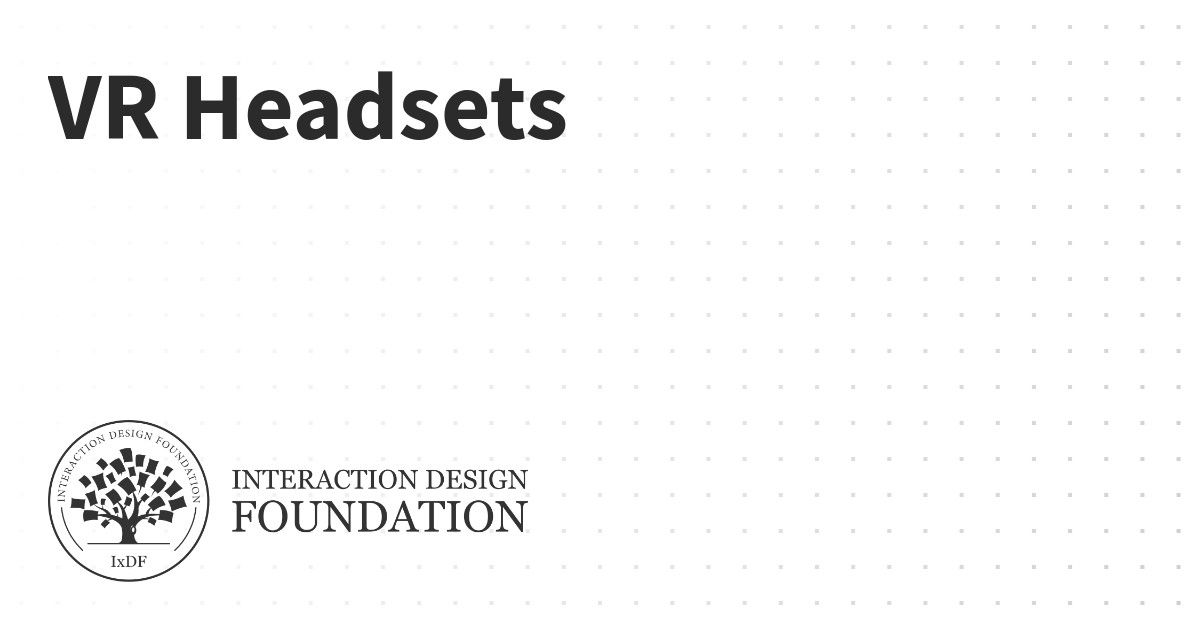A VR headset is a head-mounted device that provides immersive virtual experiences. Also known as a head-mounted display, it typically includes a pair of lenses that users look through, a screen (or screens) inside the device, and a mechanism to secure it to the head.
Here’s a look at the evolution of headsets, from stereoscopic photographs that allowed people to see in 3D in the 1800s to modern high-end standalone devices that let users interact with virtual content through controllers.
Components of a VR headset
A virtual reality headset includes the following components:
-
Display: One or two screens that display stereoscopic images. Stereoscopic images show slightly different versions of the same image for each eye to create a three-dimensional effect, thus giving the illusion of depth and space.
-
Lenses: Lenses focus the pictures for each eye, creating a convincing 3D virtual environment. They also help to enlarge the image, filling the user’s field of vision for a more immersive experience.
-
Tracking Sensors: VR headsets can include various sensors such as gyroscopes (to track orientation), accelerometers (for movement), and cameras (to detect the user’s hand movements and surroundings). These track the user’s head movements and adjust the image accordingly to ensure that the virtual environment aligns with physical movements.
-
Input Devices: Many headsets work with handheld controllers or gloves that track hand and finger movements. Some also support voice commands, eye tracking, and even full-body tracking for a more interactive experience.
-
Spatial Audio: Headsets often include built-in headphones or earphones that provide spatial audio to mimic how people hear sound in the real world. Audio enhances immersion, as the user can experience sounds as if they were coming from specific directions and distances within the virtual environment.
-
Comfort Features: Good headsets must be comfortable, especially for extended use. Adjustable straps, padding and balanced weight distribution minimize discomfort.
-
Connectivity: VR headsets may connect to a computer or a gaming console or operate as standalone devices. Tethered headsets require a physical connection (often via HDMI or USB) to a PC or console, while standalone headsets are self-contained units with their own onboard processing power.

The components of a VR headset or head-mounted display.
© Interaction Design Foundation, CC BY-SA 4.0
Types of VR Headsets
-
Tethered VR Headsets connect to a computer or gaming console through a cable. They typically offer high-quality graphics and powerful processing capabilities because they utilize the hardware of the connected device.
-
Standalone VR Headsets are all-in-one devices that don’t require a connection to an external computer or console. They have built-in screens, processors, and batteries. Standalone headsets are generally more portable and easier to set up than tethered ones. Standalone headsets usually have lower-resolution displays compared to tethered headsets.
-
Smartphone VR Headsets typically only include a case and lenses that create a 3D effect. The user’s smartphone provides the display and processors. The user only needs to insert the smartphone into the headset to enjoy the virtual experience. However, it offers lower-quality graphics and processing power than tethered and standalone headsets.
-
Hybrid VR Headsets work both as standalone devices and when connected to a PC or console. They attempt to combine the best aspects of standalone and tethered headsets.
VR Headsets’ Impact on User Experience
A well-designed headset ensures an immersive, safe and enjoyable virtual reality experience. A poor-quality headset will likely cause physical discomfort (eye strain, cybersickness) and frustration.
Here are the key parameters that influence the user’s experience
-
Comfortable Fit: Since users wear headsets for extended periods, they should be comfortable. Adjustable straps, balanced weight distribution, and padding around the eyes and face are essential. The headset should also accommodate different head sizes and shapes and be compatible with eyeglasses if needed.
-
Wide Field of View (FoV): The human field of vision is that portion of space where we can see objects at any given moment. To see objects outside the natural field of vision, we must shift our gaze, turn our heads or rotate our bodies. Headsets with a wide field of view (FoV) cover more of the user’s natural field of vision. While a FoV around 100 degrees or more is generally good, a higher FoV simulates peripheral vision.
-
Accurate and Responsive Tracking: Good headsets have precise tracking systems that accurately translate the user’s physical movements into the virtual environment. Tracking includes both head and hand movements. Systems like 6DoF (Six Degrees of Freedom) tracking are ideal since they track user movements and orientations across three axes (X, Y and Z). The six types of movements are:
-
Surge: Move left and right along the X-axis
-
Heave: Move up and down along the Y-axis
-
Sway: Moves front and back along the Z-axis
-
Yaw: Rotate along the vertical axis (i.e., turn the head left and right).
-
Pitch: Rotate along the side-to-side axis (i.e., look up and down).
-
Roll: Rotate along the front-to-back axis (i.e., tilt the head towards the shoulders).
-
Systems like 6DoF (Six degrees of freedom) enable headsets to accurately track the user’s movements, which, in turn, creates a realistic and immersive VR experience, as it mirrors how humans interact with the real world.
© Interaction Design Foundation, CC BY-SA 4.0
-
Low Latency: Latency is the delay between an input and output. In a computer-generated environment, the input is the user’s actions. For example, the user rotates their head to see what’s on the right side in their peripheral vision. The output is the content the user sees as a result of their movement. In this case, the screen displays the scene on the right side of the virtual environment. A latency lower than 20 ms is crucial to prevent motion sickness and ensure a smooth experience.
-
High Refresh Rate: Refresh rate refers to the number of times a screen displays a new image per second. It is measured in hertz (Hz), where one hertz equals one new image per second. Studies indicate that the human eye can detect images at even 75Hz. Most VR headsets offer upwards of 90Hz—a higher refresh rate results in a smoother video experience. However, very high refresh rates also consume more energy and processing power.
-
Quality Audio: Integrated audio solutions enhance immersion and improve the overall virtual experience, bringing it as close to real life as possible.
Other hardware-related factors that enhance the user experience include compatibility across platforms and devices, ergonomic controllers, adjustable lenses, processing power and battery life.
Barriers and Challenges to VR Headset Adoption
While virtual reality has made significant strides, there are several reasons why VR headsets are not as common as other consumer electronics like smartphones or laptops:
-
Cost: High-quality headsets can be expensive, especially those that rely on a powerful computer to run. In addition, technology is rapidly evolving, and some consumers might be hesitant to invest in technology that could quickly become outdated.
-
Content Availability: There’s a limited range of VR content compared to other media formats. While there are notable games and applications, the breadth and variety of content available for VR are still growing.
-
Proprietary Software, Platforms and Compatibility Issues: Many VR headsets are often tied to specific software ecosystems or platforms, which can be seen as a form of “locking in.” This means that the headset is designed to work primarily with the manufacturer’s proprietary software and platforms. While there are open standards and cross-platform tools in virtual reality, compatibility can still be an issue. Some headsets may not support certain applications or games due to software restrictions or hardware limitations.
-
Weight and Comfort: Many headsets are bulky and heavy, which causes discomfort or fatigue during extended use. The weight distribution and ergonomics of the headset are crucial for a comfortable experience, especially in applications that require long-term use.
-
Battery Life (for wireless headsets): Wireless headsets offer greater freedom of movement but are often limited by battery life. This can be a significant limitation for long gaming sessions or professional applications.
-
Heat and Noise: Electronic components in headsets can generate heat and noise, which can be distracting and uncomfortable for the user.
-
Cable Management (for tethered headsets): Tethered headsets can restrict movement and create a hazard with cables lying around. While this provides a consistent power supply and can support higher processing power, it detracts from the sense of freedom in VR.
-
Eye Strain, Discomfort and Motion Sickness: Prolonged use of headsets can cause eye strain and discomfort due to factors like flickering, brightness levels, and the need for the eyes to constantly adjust focus between real and virtual distances. In addition, if the virtual environment doesn’t synchronize with the user’s movement, users might get motion sickness. This VR technology-induced sickness has its own term, cybersickness.
-
Complex Setup and Space Requirements: A VR system setup can be complex. It might need space for safe movement, sensors for tracking, and sometimes a tether to a powerful PC. Not everyone has the space or desire to set up a dedicated VR area in their home.
-
Lack of Awareness or Interest: Some people might not be aware of what virtual reality has to offer, or they may not be interested in the type of content currently available. Additionally, people who haven’t tried high-quality VR might not appreciate its potential due to experiences with lower-quality VR.
-
Portability and Accessibility: Unlike smartphones or tablets, many virtual reality systems are not easily portable and require a stationary setup.
-
Social Acceptance: The immersive nature of virtual reality sets it apart from other technologies that allow for multitasking or social interaction in the physical world. Some people view this aspect of VR as isolating or unconventional.
Practical Applications of VR Headsets
An ideal headset gets out of the way of the user’s experience. It must not draw attention to itself. As VR pioneer Mel Slater describes in this video, virtual reality can open up a world of possibilities across various domains.
Virtual reality professionals across various industries have embraced headsets. Here are some of the key applications:
Gaming
One of the most popular uses of VR headsets is in the gaming industry. They provide an immersive gaming experience where players feel like they are inside the game environment.

Games such as Horizon Call of the Mountain transport users into an action-packed adventure.
© Sony Interactive Entertainment, Fair Use
Education and Training
VR is used for educational purposes, including virtual classrooms, simulations and training programs. It’s particularly useful in fields like medicine, aviation, and military training, where practicing in a virtual environment can be safer and more cost-effective.
Virtual reality is also used in sports training and fitness programs, providing immersive workouts and simulating various outdoor activities. For example, many players of Germany’s under-17 football team undertook training through virtual goggles to develop cognitive skills and improve decision-making on the football field. Head coach Christian Wuck shared his experience with the technology and suggested potential applications in an interview with Sky Sports:
“We have found that players who have good orientation on the pitch are also good with the VR glasses. Our best players are the best at both… It could help injured players prepare to get back on the pitch… If they cannot train, maybe they can still train with the VR glasses. Maybe it could be used at half-time.”
Christian Wuck, Head Coach, German National U17 Football Team, from an interview with Sky Sports.
Healthcare
Healthcare professionals can use virtual reality for therapy, surgery simulation, skills training, and patient rehabilitation. It helps in treating conditions like PTSD, anxiety disorders, and phobias through controlled exposure in a virtual environment.

Penumbra’s rehabilitation system, REAL System, focuses on patient recovery. Designed for individuals recovering from stroke, traumatic brain injury, or other neurological conditions, the system offers 360-degree video, instructor-guided and self-guided travel and nature experiences and interactive exercises that stimulate physical and cognitive functions.
© Penumbra, Fair Use
Architecture and Design
Virtual reality technology allows architects and real estate agents to create virtual tours of buildings and properties. This enables potential buyers or investors to explore properties remotely and architects to visualize their designs more effectively.
Similarly, industrial designers can use VR for 3D modeling and design to create and visualize their work in a three-dimensional space.

Tools such as Enscape3d turn technical blueprints into 3D, VR-ready experiences that people can interact with and experience in real-time.
© Enscape, Fair Use
Tourism and Exploration
VR headsets offer virtual travel experiences, allowing users to explore tourist destinations, natural environments, or historical sites without leaving their homes.

International hotel chain Marriott piloted the “VRoom Service,” in which guests ordered virtual reality experiences to their rooms. The company also launched a virtual travel content platform, “VR Postcards,” that included immersive travel stories from real travelers. In this example, the user can see what’s “behind” them in a virtual space.
© Marriott International, Fair Use
Art and Culture
Artists use VR to create immersive artworks and experiences, offering viewers new ways to engage with art. Museums and galleries have also adopted VR to create virtual tours and interactive exhibits.

The Louvre Museum in Paris launched an immersive VR experience called “Mona Lisa: Beyond the Glass” that helps the viewer experience the painting from their home, away from the crowds. Viewers can explore the artwork in ways not possible in real life. They can get up close to the subject, see the fine grains, get a detailed view of Leonardo da Vinci’s painting processes and even try to understand the woman in the painting.
© Musée du Louvre, Fair Use
Entertainment and Media
The entertainment industry uses VR for immersive movies and interactive experiences, where viewers can feel like they are in the story or event.

“Henry” is an Emmy award-winning animated virtual reality movie about a hedgehog who loves hugs.
© Oculus Story Studio, Fair Use
Automotive Industry
Automobile manufacturers use VR in vehicle design, simulation, and testing. Engineers and designers can analyze and experience a car’s design and functionality before building it.

BMW has applied gaming technology (Unreal Engine) to its engineering process. The development team uses virtual reality to test virtual prototypes.
© BMW, Fair Use
Space Exploration and Research
Agencies like NASA use VR to simulate space missions to train astronauts, control robotic rovers on other planets, and visualize complex astronomical data.
The applications are continuously evolving as VR technology advances, opening up new possibilities and ways to integrate virtual experiences into different fields.
Learn More about VR Headsets
Learn how to design for virtual reality in our course, UX Design for Virtual Reality.
Watch the Master Class Webinar on How To Influence Behavior Through Virtual Reality Narratives by Co-Director of Event Lab, Mel Slater.
For more on virtual reality’s evolution and potential, read The Past, Present and Future of Virtual Reality.
Watch Neurotechnologist Conor Russomanno demonstrate the future capabilities of head-mounted devices to make VR more accessible in the TED Talk, A powerful new neurotech tool for augmenting your mind.
Virtual Reality Usability Design by David Gerhard and Wil J. Norton provides a comprehensive guide on usable and immersive VR experiences.
For an in-depth understanding of Extended Reality (XR), read The VR Book: Human-Centered Design for Virtual Reality by Jason Jerald.
